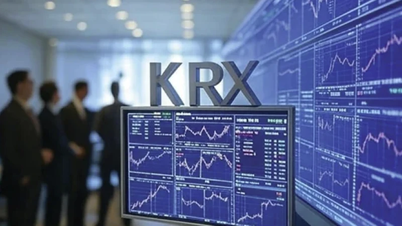ANTD.VN - Credit institutions are concerned that the overall credit risk level will continue to increase throughout 2024. The two areas forecast to have the highest potential credit risk continue to be real estate investment loans and securities investment loans.
Tightening credit standards in many sectors
According to the assessment of credit institutions (CIs), in the last 6 months of 2023, the total loan demand of customers was met at a higher rate than in the first 6 months of 2023 and the same period of 2022. Specifically, 92.7% of CIs said they met 75% - 100% of loan demand (89.5% in the previous period and 88.6% in the same period last year). The rate of CIs assessing that they met the loan demand at a high level (75% or more) of the group of 15 key commercial banks in this period was 100% (93.3% in the previous period).
To facilitate businesses and people to access credit capital, in the last 6 months of 2023, credit institutions said they will continue to slightly loosen credit standards for 2 priority areas: High-tech investment loans and Supporting industry investment loans. At the same time, they will slightly loosen credit standards for Logistics service investment loans and Home purchase loans.
Credit institutions have also tightened credit standards in the following sectors: Securities investment and trading, Real estate investment and trading, Finance, banking and insurance, Construction and other sectors.
However, overall customer credit demand in the second half of 2023 improved more slowly than in the first half of the year and was much lower than expected.
Credit demand is also forecast to continue to improve slowly in the first half of 2024 compared to the second half of 2023 in most sectors; however, it is expected to improve more strongly in the second half of 2024, thus expecting better improvement in the whole year of 2024 compared to 2023.
 |
Banks fear credit risks continue to rise but at a slowing pace |
Of the four main areas surveyed, it is noteworthy that in this survey, the demand for loans for industrial development and construction has the highest rate of assessment and forecast by credit institutions to increase in 2023 and 2024 instead of the loan sector for life and consumption as in 2022.
According to the assessment of credit institutions, overall credit risks will continue to increase in the last 6 months of 2023, but the growth rate has slowed down compared to forecasts and compared to the first 6 months of 2023.
Overall assessment of 2023, the credit risk level of loans is assessed to increase more strongly than in 2022 and compared to the initial forecast.
Therefore, in addition to the efforts of credit institutions to further narrow the gap between lending interest rates and average capital costs, credit institutions have slightly tightened the overall terms and conditions of lending to corporate customers to better manage risks, ensure safety and credit quality, but maintain stable credit terms and conditions for individual customers.
The tightening criteria are mainly requirements on collateral, additional terms in credit contracts, requirements on minimum credit ratings of customers..., especially for the fields of securities investment loans and real estate investment loans.
Real estate and stocks still have potential risks
Forecasting the first 6 months of 2024, credit institutions believe that economic growth; interest rates; changes in investment demand for production and business; investment opportunities, import and export; and improved service quality are factors that positively affect the increase in credit demand of corporate customers.
Meanwhile, on the contrary, factors negatively affecting credit demand are unfavorable developments in the real estate market, stocks, economic growth and decline in consumer confidence.
Three sectors: Wholesale and retail; Import and export; Food and beverage production are selected by many credit institutions as the biggest drivers of credit growth in 2024.
In the next 6 months, credit institutions are concerned that the overall credit risk level will continue to increase, but the growth rate will slow down in 2024 compared to 2023.
In particular, credit risks in some sectors such as loans for agricultural, forestry and fishery development and loans for investment in logistics services are forecast to decrease. On the contrary, the two sectors forecasted to have the highest potential credit risks continue to be loans for real estate investment and loans for securities investment.
In the first 6 months of the year and the whole year of 2024, 70.3-73.3% of credit institutions plan to continue to maintain unchanged or slightly loosen their overall credit standards (13.9-16.8% of credit institutions plan to loosen credit standards, 12.9% of credit institutions plan to slightly tighten credit standards).
Credit institutions also plan to keep overall lending terms and conditions stable for corporate customers and loosen them for individual customers (expected to apply to loans for living needs and loans to buy real estate for residence).
Source link


![[Photo] National Assembly Chairman Tran Thanh Man attends the Party Congress of the Committee for Culture and Social Affairs](https://vphoto.vietnam.vn/thumb/1200x675/vietnam/resource/IMAGE/2025/5/11/f5ed02beb9404bca998a08b34ef255a6)
































![[Photo] Discover the beautiful scenery of Wulingyuan in Zhangjiajie, China](https://vphoto.vietnam.vn/thumb/1200x675/vietnam/resource/IMAGE/2025/5/11/1207318fb0b0467fb0f5ea4869da5517)
![[Photo] National Assembly Chairman works with leaders of Can Tho city, Hau Giang and Soc Trang provinces](https://vphoto.vietnam.vn/thumb/1200x675/vietnam/resource/IMAGE/2025/5/11/c40b0aead4bd43c8ba1f48d2de40720e)































































Comment (0)